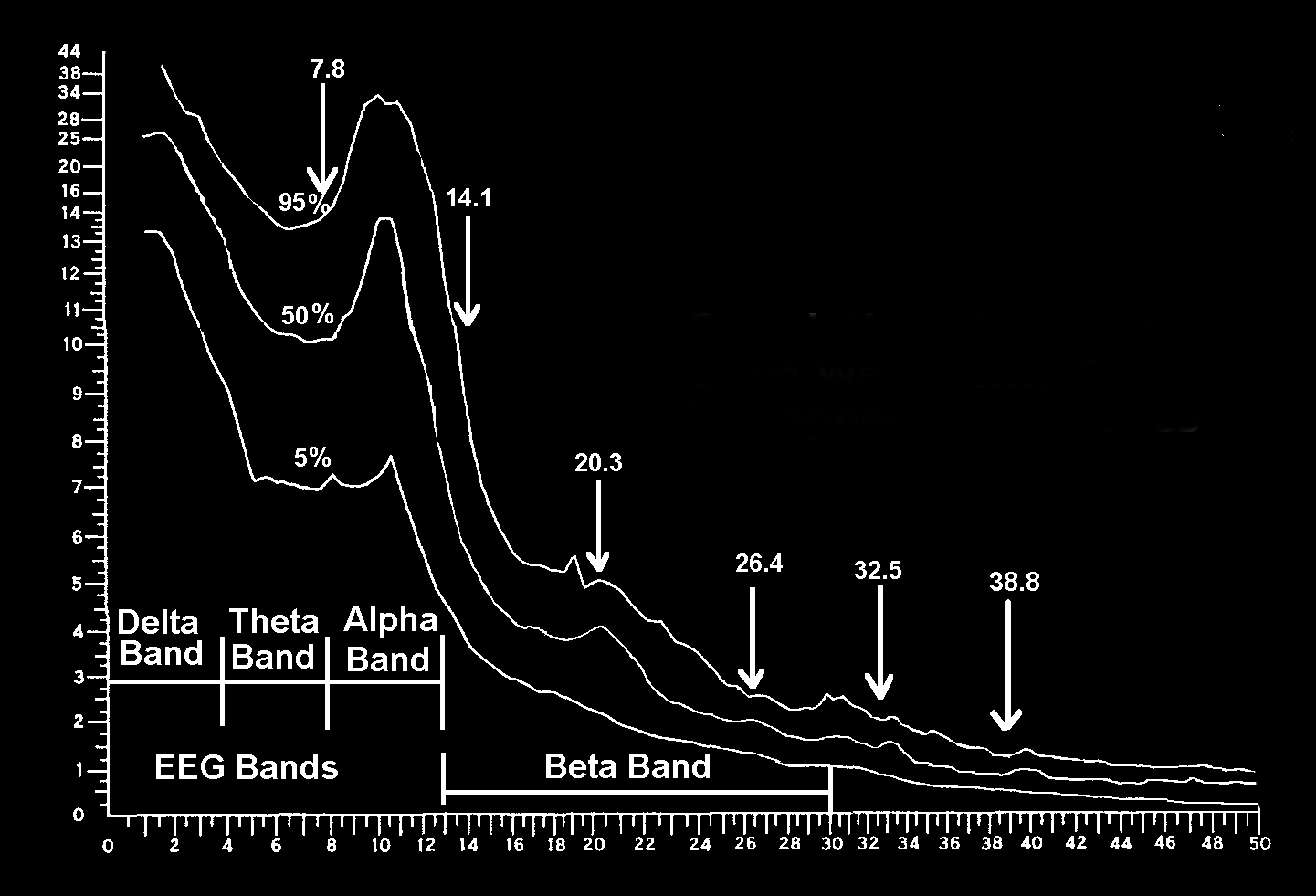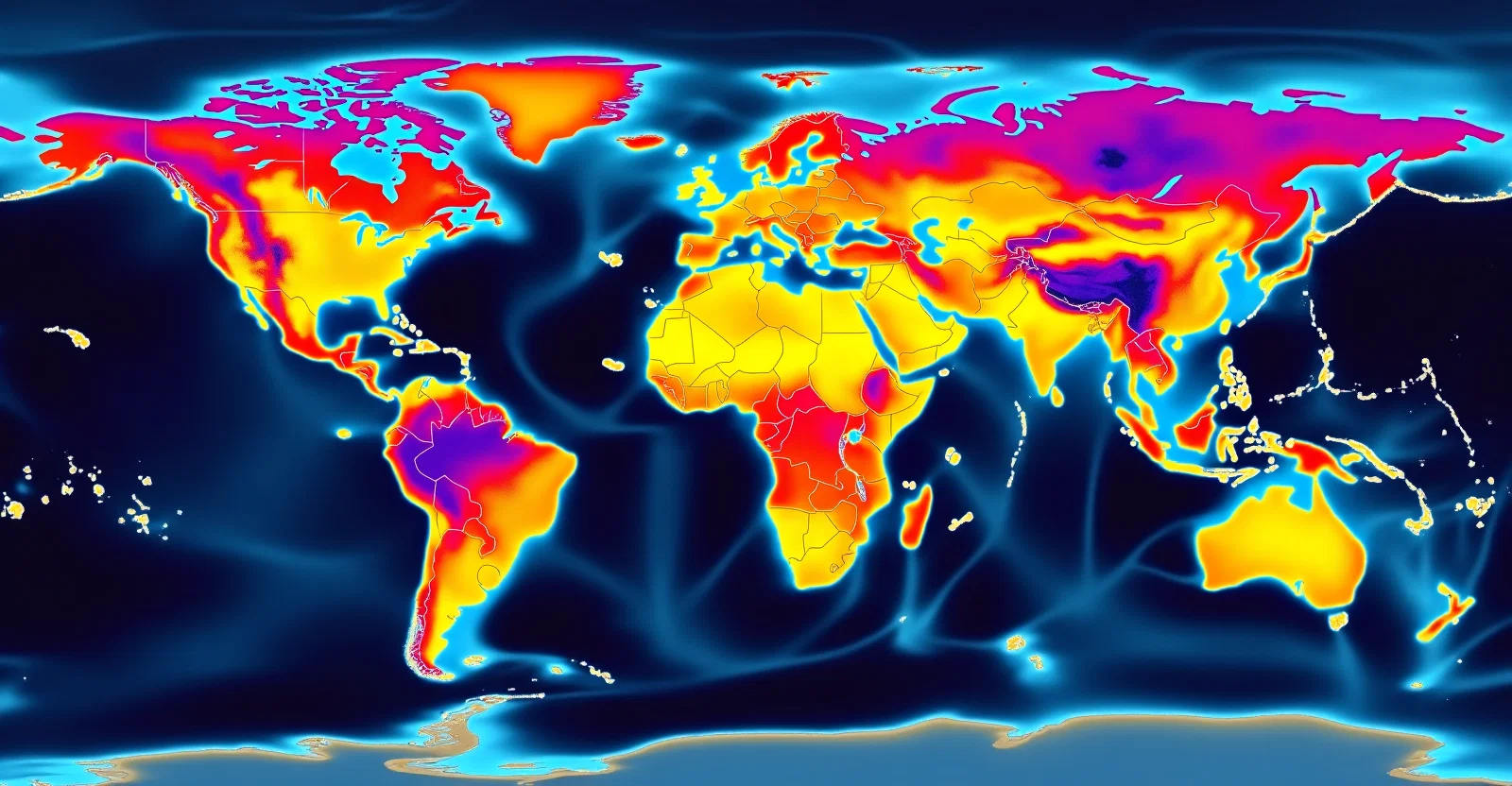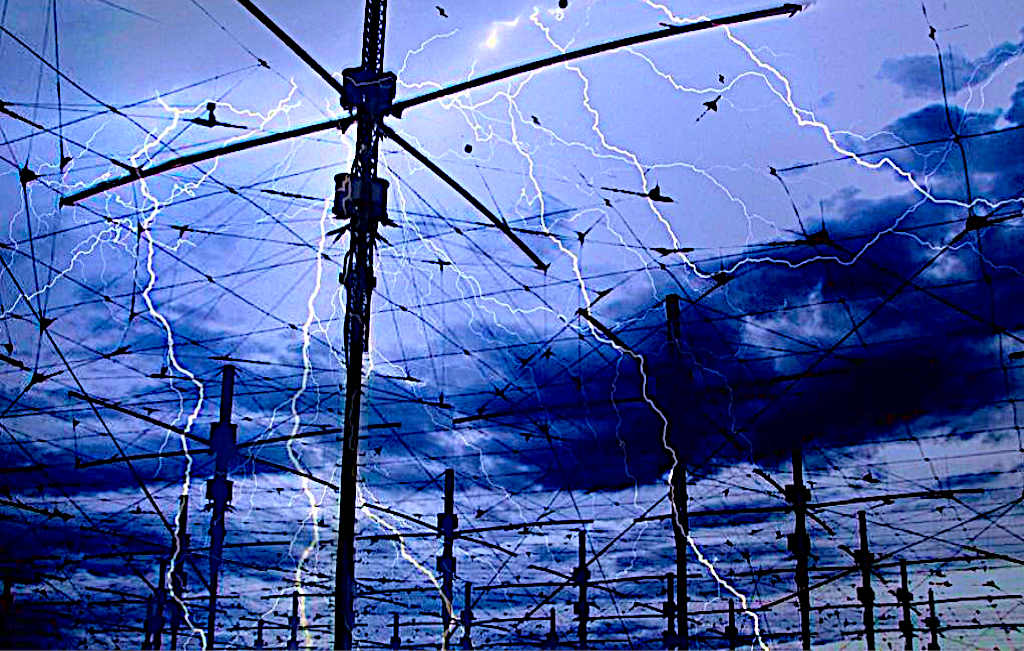Mother Earth's Heartbeat
Subliminal Nourishment from Our Planet
The Earth-ionosphere cavity acts as a resonant chamber for electromagnetic waves generated by lightning strikes. Known as Schumann resonances, these natural frequencies have intrigued scientists for decades due to their potential effects on mind, mood and behavior.
Historical Context and Early Research
The concept of Schumann resonances was first proposed by German physicist Winfried Otto Schumann in 1952, who mathematically predicted the presence of electromagnetic standing waves in the Earth-ionosphere cavity. Subsequent experimental confirmation in the 1960s validated the existence of these resonances, leading to further exploration of their properties and potential biological relevance. Over time, Schumann resonances became a focal point for studies on their environmental and health implications, as they represent one of the most consistent electromagnetic signals in Earth’s atmosphere.
The Spectrum of Schumann Resonances
Schumann resonances consist of a fundamental frequency of approximately 7.83 Hz and several harmonics that extend up to roughly 60 Hz. These harmonics occur due to the electromagnetic standing waves trapped between the Earth’s surface and the ionosphere. They can vary slightly due to ionospheric conditions, solar activity, and other environmental factors.

Schumann Resonances and Brainwave Correlations
Human brainwave activity is categorized into distinct frequency bands: delta (0.5–4 Hz), theta (4–8 Hz), alpha (8–12 Hz), beta (12–30 Hz), and gamma (>30 Hz). These frequencies correspond to various mental states, including relaxation, focus, and heightened cognitive activity. Strikingly, Schumann resonances overlap with the alpha and low beta ranges, suggesting a potential resonance effect between these natural ELF waves and human brain activity.
- Fundamental Frequency (7.83 Hz): Closely aligned with human alpha brainwave rhythms.
- First Harmonic (~14.1 Hz): Resonating near the beta brainwave range.
- Second Harmonic (~20.3 Hz): Within the upper beta and gamma brainwave range.
- Third Harmonic (~26.4 Hz): Extending further into gamma frequencies.
- Higher Harmonics: Less studied but potentially relevant to subtle biological processes.
Energetic Brainwave Entrainment and Its Relevance
Energetic brainwave entrainment refers to the synchronization of brainwave activity with external rhythmic stimuli, including electromagnetic frequencies. This process works by inducing a frequency-following response in the brain, where neurons align their firing rates with the external stimulus. Studies such as O’Connor et al. (2008) have shown that electromagnetic fields in the ELF range can influence this entrainment process, leading to changes in cognitive and emotional states. This phenomenon is particularly relevant to Schumann resonances due to their overlapping frequency ranges with alpha and beta brainwaves. By modulating brainwave coherence and promoting synchronization, Schumann resonances may play a subtle but impactful role in maintaining mental health and enhancing cognitive function.
Alpha Brainwaves and the 7.83 Hz Frequency
The fundamental Schumann resonance of 7.83 Hz is particularly significant because it falls within the alpha brainwave range, associated with relaxation, meditation, and a state of wakeful rest. A study by Persinger and Saroka (2013) found that increases in Schumann resonance power were correlated with heightened alpha coherence in human EEG data, suggesting that exposure to this frequency may stabilize alpha rhythms and foster relaxation.
Higher Harmonics and Cognitive States
The higher harmonics of Schumann resonances align with beta and gamma brainwaves, which are linked to focus, alertness, and complex cognitive processes. A study by Röschke and Mann (1997) demonstrated that exposure to ELF frequencies, including those close to Schumann harmonics, altered EEG activity, specifically increasing beta coherence. These findings indicate that natural ELF waves might entrain neural activity, influencing cognitive processes such as attention and problem-solving.

Potential Therapeutic Implications
Depression and Anxiety
Preliminary evidence suggests a connection between Schumann resonance exposure and improved mental health outcomes. Persinger (2014) proposed that Schumann resonances could entrain brainwave activity, promoting emotional resilience and reducing symptoms of anxiety. This hypothesis was supported by a study that linked increases in Schumann resonance intensity to decreased anxiety levels among participants during controlled experiments.
Cherry (2002) analyzed the relationship between ELF waves and physiological homeostasis, concluding that Schumann frequencies might mitigate the disruptive effects of artificial electromagnetic fields on human health. Additionally, Saroka and Persinger (2013) identified correlations between elevated Schumann resonance power and decreased markers of psychological stress in experimental settings.
Circadian Rhythms and Seasonal Affective Disorder
The Earth’s electromagnetic environment, influenced by Schumann resonances, interacts with circadian rhythms, the body’s internal clock governing sleep-wake cycles. Wilson (2005) examined geomagnetic and ELF activity’s impact on mood disorders, including seasonal affective disorder (SAD). The study found a statistical association between disruptions in ELF activity and increased SAD prevalence, supporting the hypothesis that stable Schumann resonance patterns may regulate circadian processes.
Furthermore, it has been speculated that the subliminal reception of the Schumann spectrum in real time could serve as a trigger for seasonal behavioral adaptation, potentially influencing mood and activity patterns in response to environmental changes. It is now established fact that many species of birds and other wildlife navigate by sensing the magnetic field lines of our planet. For this purpose, their brains contain deposits of iron oxide particles known as magetities These have recently been discovered to also occur within the most ancient structures of the human brain, the cerebelum and stem, suggesting a possible vestigial functionality.
Cognitive Enhancement
Evidence from bioelectromagnetics research suggests that exposure to ELF waves may enhance cognitive functions. Liboff (2004) reviewed studies showing that ELF electromagnetic fields modulate neuronal activity, proposing that Schumann resonance frequencies might influence learning and memory. Further experimental data from Saroka and Persinger (2013) showed correlations between Schumann resonance power and improved short-term memory performance.
Neurological Disorders
Therapeutic applications of ELF electromagnetic fields for neurological disorders, such as epilepsy, are an emerging field of study. Röschke and Mann (1997) demonstrated that ELF wave exposure modulated brain activity, including reductions in seizure activity under controlled conditions. While Schumann resonances themselves are not yet a clinical tool, their frequencies overlap with those used in neurotherapy, warranting further investigation.

Modulating Influences
Climate Change and Its Effects on Schumann Resonances
Climate change could have significant effects on the Schumann resonance spectrum. Changes in atmospheric composition, such as increases in greenhouse gases and altered patterns of water vapor, can affect the ionosphere’s electrical conductivity. This, in turn, might shift the resonant frequencies or alter the intensity of the Schumann waves. For example, increased lightning activity associated with global warming could amplify Schumann resonance power, potentially intensifying its influence on biological systems. Conversely, disruptions to the ionospheric structure due to extreme weather events or altered global circulation patterns might weaken or destabilize these resonances, with unknown consequences for their impact on human health and cognition.
Geomagnetic Correlations with Health Outcomes
Geomagnetic activity, such as solar storms, has been linked to fluctuations in Schumann resonance power. Studies indicate that heightened geomagnetic activity correlates with increased incidents of mood disorders, migraines, and cardiovascular stress. For example, research by Wilson (2005) found statistically significant relationships between geomagnetic disturbances and hospital admissions for anxiety and depression. These findings underscore the potential for Schumann resonances to act as stabilizing factors during periods of geomagnetic instability.

HAARP and Technological Interference with Schumann Resonances
Some researchers have raised the possibility that Schumann resonances could be deliberately altered through technological means to influence populations on a mass scale. Technologies such as the High-Frequency Active Auroral Research Program (HAARP), which transmits powerful radio waves into the ionosphere, are capable of modifying ionospheric properties and potentially affecting Schumann frequencies. Their ELF component is capable of interacting selectivley with targeted geographic regions based upon variations local soil conductivity and induced cyclotron resonance of underlying rock composition.
Another example is stratospheric aerosol injection (SAI), a geoengineering technique intended to reflect solar radiation or shift weatrher patterns but which could inadvertently alter atmospheric conductivity and the ionosphere’s electrical properties. So-called "punch holes", exhaust plumes and ionized gas wakes from satellite launches may be contributing factors. These technologies highlight the complex interplay between human activities and natural electromagnetic systems, emphasizing the need for further research and ethical oversight to prevent the introduction of aberations or instabilities.
Interference from Electro-Pollution
Additionally, urbanization and technological proliferation have introduced artificial electromagnetic fields into the environment, often referred to as “electro-pollution.” These signals may interfere with natural ELF fields, potentially altering the stabilizing effects of Schumann resonances on biological rhythms. Understanding these interactions is crucial for mitigating potential health risks posed by anthropogenic influences.
Commercially made devices are now available that emit low-intensity ELF signals replicating frequencies within the normal Schumann spectrum. These are marketed as tools for personal brainwave entrainment, aiming to align users with specific mood states, enhance relaxation, or counteract the effects of ambient electromagnetic pollution. While their efficacy varies, they offer an intriguing application of ELF technology for individual mental and emotional health management.
References
1. Cherry, N. (2002). “Schumann resonances, a plausible biophysical mechanism for the human health effects of solar/ geomagnetic activity.” *Natural Hazards*, 26(3), 279–311.
2. Becker, R. O., & Marino, A. A. (1982). *Electromagnetism and Life*. State University of New York Press.
3. Persinger, M. A. (2014). “The electromagnetic nature of neurophysical processes.” *Frontiers in Human Neuroscience*, 8, 278.
4. Röschke, J., & Mann, K. (1997). “Nocturnal sleep EEG and exposure to electromagnetic fields.” *Neuropsychobiology*, 36(2), 98–104.
5. Saroka, K. S., & Persinger, M. A. (2013). “Quantitative evidence for direct effects of Schumann resonance on human EEG coherence.” *Neuroscience Letters*, 495(2), 90–94.
6. Wilson, B. W. (2005). “Circadian rhythm disruption and geomagnetic field interactions.” *Bioelectromagnetics*, 26(S7), S122–S128.
7. Liboff, A. R. (2004). “Magnetobiology: The ELF side of the spectrum.” *Pathophysiology*, 11(2), 199–200.
8. Dobson, J. (2006). “Magnetite and the basis for biological effects of natural ELF electromagnetic fields.” *Bioelectromagnetics*, 27(1), 35–36.
9. Berg, H., & Hijmans, J. (2010). “Biological effects of electromagnetic fields on circadian rhythms.” *International Journal of Radiation Biology*, 86(5), 469–476.
10. Löscher, W., & Liburdy, R. P. (1998). “ELF magnetic fields and neuroendocrine responses.” *Environmental Health Perspectives*, 106(S1), 158–164.
11. O’Connor, M. E., et al. (2008). “Therapeutic ELF electromagnetic fields: Clinical implications.” *Bioelectromagnetics*, 29(7), 537–545.
12. Cifra, M., et al. (2011). “Electromagnetic cellular interactions and biophotons.” *Progress in Biophysics and Molecular Biology*, 105(3), 223–246.
13. Johnsen, Sonke & Lohmann, Kenneth J. (2005) "The physics and neurobiology of magnetoreception." *Nature Reviews Neuroscience* (6) 703–712
Please note: This article is for informational purposes only and should not be considered a substitute for professional medical advice, diagnosis, or treatment.
Click here to return to homepage menu.

